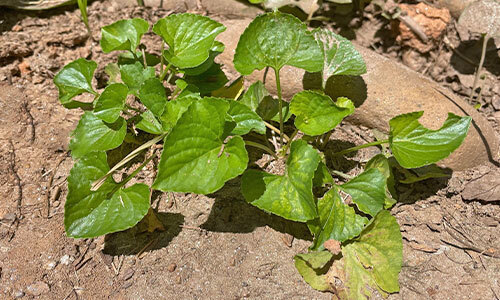
Wild Violet is a low-growing, clumping perennial broadleaf weed that produces small, colorful flowers in shades of purple, violet, and white that distinguish it from other weeds. Some varieties of Wild Violet are also called common blue violets.
While the flowers of Wild Violet make them one of the more attractive weeds found across the United States--they are sometimes used in landscaped areas for their color--you should still take action against this fast-growing weed if it appears in unwanted areas such as your lawn. It can damage your turf by stealing water and nutrients from the grass you've worked so hard to keep healthy.
Wild Violet is sometimes confused with Creeping Charlie. Before applying a treatment, use this guide to ensure you are treating for the correct weed.
Characteristics of Wild Violet

- Grows low to the ground
- Plants grow from 2 to 12 inches tall
- The heart-shaped leaves range from 1/2 to 2 1/2 inches wide and have serrated edges and a glossy finish
- Flowers are purple, blue, white, or even yellow in color and have five petals each
- These weeds flower in the months of March, April, and May
- Produces numerous dark brown or purplish seeds
- Germinated Wild Violet plants spread by roots called rhizomes
Where Does Wild Violet Grow?
Wild Violet is found across much of the United States--from Florida as far North as Canada. This perennial weed favors the damp, shady parts of a lawn. These weeds can grow in open fields, woods, areas near streams, and roadsides.
Have you found Wild Violet in your yard? Learn where to look in our Wild Violet Inspection Guide. Click the right arrow below to read more.


